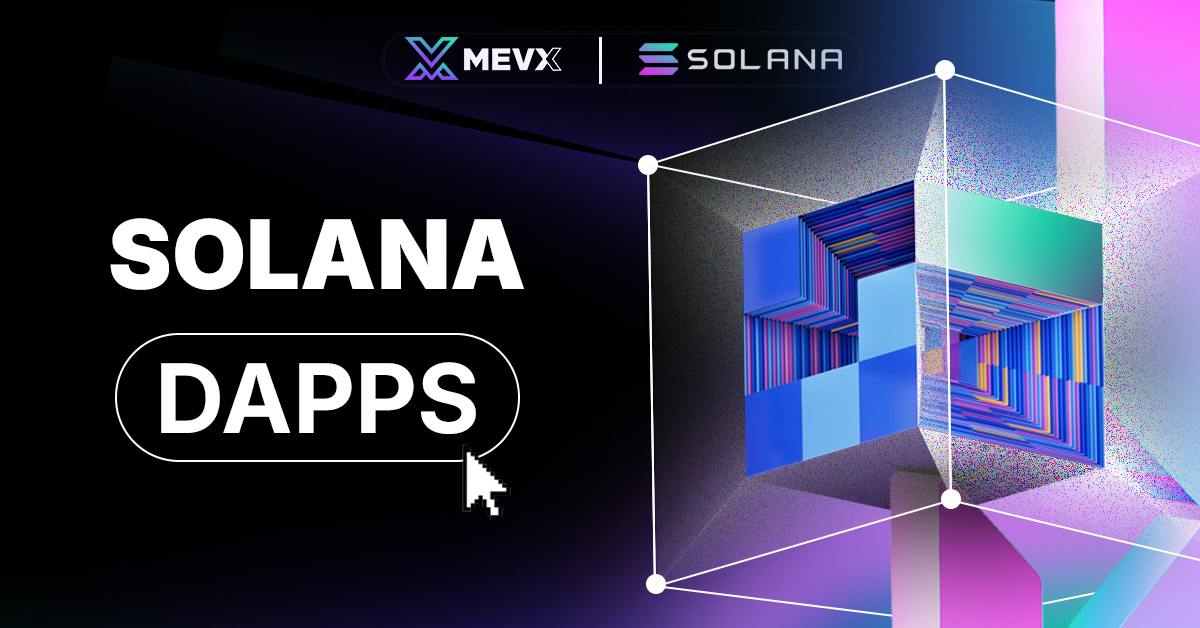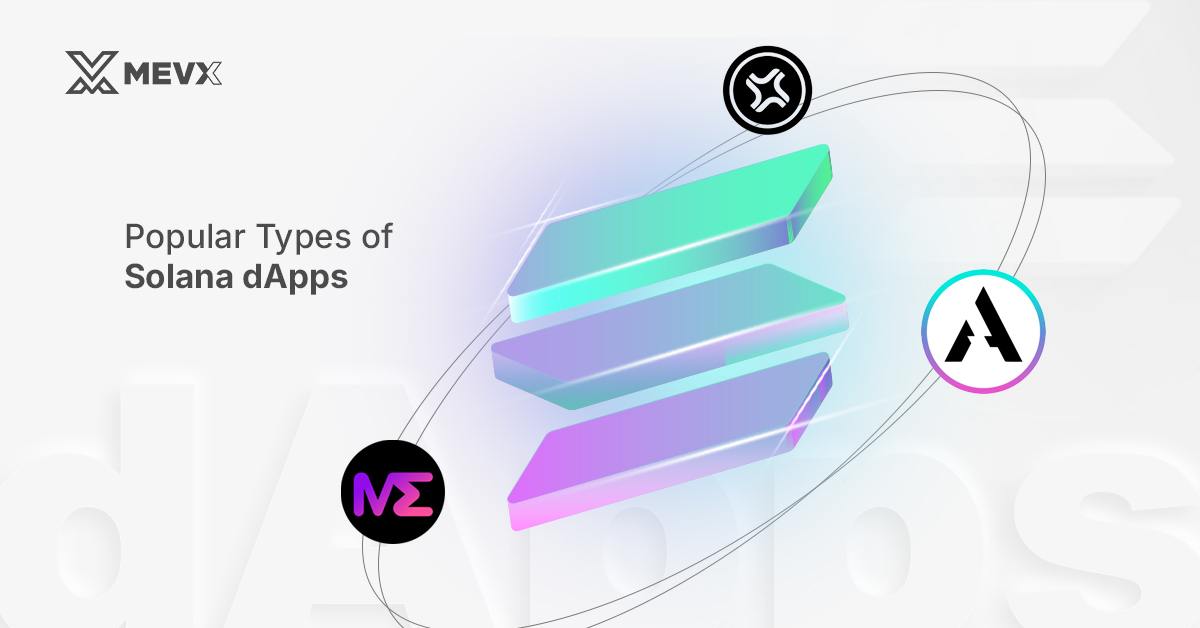Main Takeaways

DApps on the Solana Blockchain
Introduction
Solana is the fastest-growing and most scalable blockchain in the current crypto market. With its rapid transaction speeds and low fees, Solana emerges as an ideal platform for decentralized applications, or dApps. As a result, Solana’s dApps ecosystem is continuously expanding, satisfying users’ needs in multiple fields.
This article covers what dApps are, how they work on Solana, and how to interact with them.
What Are dApps?
Decentralized Applications, or dApps for short, simply are applications created using blockchain technology and operate without a central authority. While traditional apps, like TikTok or Facebook, are controlled by a company or an organization, dApps run on a decentralized network of various nodes. To users, dApps are mostly similar to the traditional apps on your phone.
How dApps Work
To interact with dApps, users need to understand how a dApp functions.
Governance
DApps are decentralized as their community governs them. This means users can actively contribute to every update. Since users are people who use the platform daily, they deeply understand what the platform needs. The platform will evolve in a way that benefits its community the most.
Data Handling
DApps only have access to information that you want to share, meaning you can remain anonymous if you prefer. It does not contain ads and does not gather information.
Infrastructure
In decentralized apps, the infrastructure includes:
- The frontend serves as the user interface
- The code, instead of being run on a single server, is executed across the blockchain itself through a smart contract, ensuring there is no single point of failure.
- All data is stored on the blockchain’s distributed ledger rather than in a centralized database.
Unlike traditional infrastructure that relies on a single server, dApps do not have a single point of failure. The blockchain consists of many nodes globally, making it highly resilient. The likelihood of all these nodes turning off at the same time is extremely low.
Transparency
dApps operate with a great level of transparency due to their blockchain-based infrastructure.
- Content Moderation: Any changes or removals would typically need to be agreed upon by the network, providing a more transparent and democratic process.
- Algorithmic Transparency: With dApps, smart contracts execute the app’s code on the blockchain. This code is often open-source, meaning anyone can inspect how algorithms work, making the platform’s operations more transparent to users.
How to Interact with Solana dApps
To start on the dApps ecosystem on Solana, you have to create a Solana wallet with some SOL tokens. You can follow this guide to create a Phantom or Solflare wallet.
With that sorted, interacting with dApps is fairly easy. They can be accessed via a web browser or mobile app.
Popular Types of Solana dApps
Now that you understand what dApps are, let’s look at some of the most popular categories and examples of decentralized applications on the Solana blockchain.

Popular Types of Solana dApps
1. Decentralized Finance (DeFi)
Solana has become a major player in the DeFi space, with dApps offering services such as decentralized exchanges (DEXs), lending platforms, and yield farming opportunities. Some notable Solana DeFi dApps include:
- Raydium: An automated market maker (AMM) that allows users to create pools, swap, and stake to earn yield. This is currently the most popular DEX on Solana, with the TVL (total value locked) of $1.602B.
- Jito: Jito allows you to stake your SOL, but instead of locking it, Jito converts your SOL into JitoSOL. You can use JitoSOL like a coin, meaning you can trade, sell, or use it in other DeFi activities while still earning staking rewards. This is called “Liquid Staking”, and the TVL of Jito is $2.077B.
2. NFT Marketplaces
Solana has a growing ecosystem of NFT (Non-Fungible Token) marketplaces where users can create, buy, and sell NFTs. Thanks to Solana’s fast and affordable transactions, NFT trading is seamless and accessible.
- SolSea: One of the leading NFT marketplaces on Solana, allowing artists to mint and sell their digital creations.
- Magic Eden: Another popular Solana-based NFT marketplace with a focus on ease of use and a wide range of NFT collections.
3. Gaming dApps
Solana’s speed and scalability make it perfect for blockchain-based games, offering players fast and cost-effective transactions.
- Star Atlas: A next-generation space exploration game that integrates NFTs and DeFi, allowing players to explore, trade, and battle in a virtual universe.
- Aurory: A turn-based strategy game where players collect NFT creatures to compete in battles.
Conclusion
Solana’s dApp ecosystem is rapidly expanding, offering a variety of applications ranging from DeFi to gaming and NFTs. Thanks to Solana’s high-speed, low-cost transactions, interacting with these dApps is not only efficient but also affordable. Whether you’re looking to trade, lend, or explore the world of NFTs, Solana’s dApps have something to offer every crypto enthusiast.
As always, ensure your wallet and private keys are secure when using dApps, and keep learning to stay ahead in the decentralized world.
Share on Social Media:
